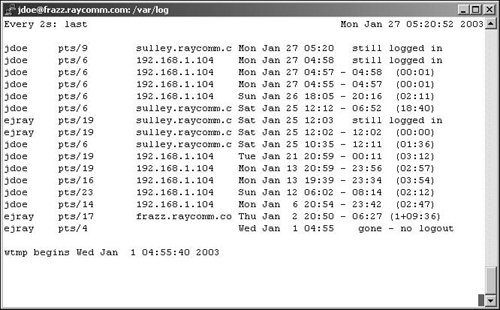Keeping Up with watch
Keeping Up with watchAs a system administrator, you practically have to have eyes in the back of your head and be aware of all kinds of activities that might be going on. The watch command is your friend. It keeps an eye on pretty much anything (users, system, or files) you want to monitor. To watch:
|
EAN: 2147483647
Pages: 251

 ls -l /var/spool/mail
ls -l /var/spool/mail  Tips
Tips